
Feel free to add tags, names, dates or anything you are looking for
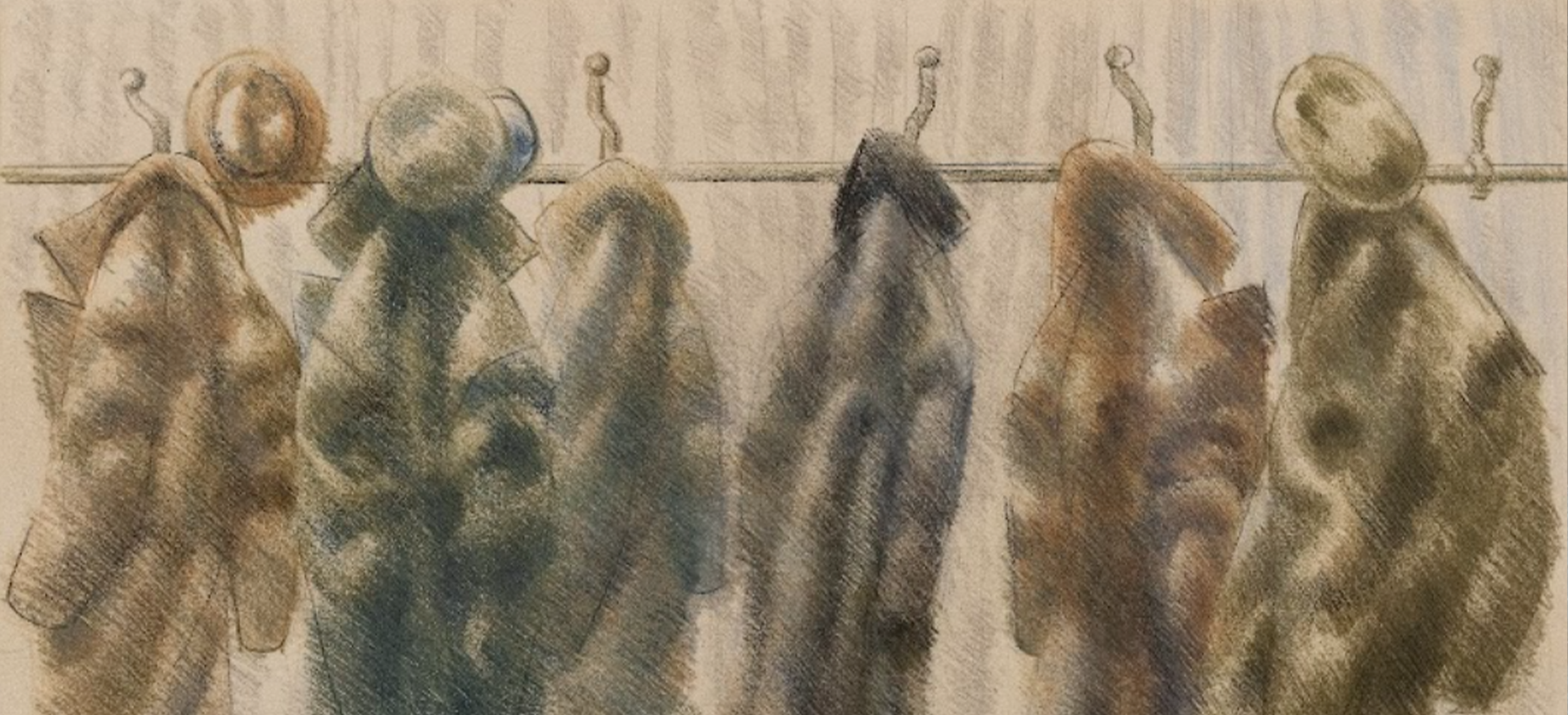

Several influential figures spring to mind when considering Georgian fine art in the contemporary era, and Dimitri Eristavi is undoubtedly among them. Nearly 70 years since his first emergence on the artistic scene, we are even more aware of the significance of his painting.
Dimitri Eristavi was born in Tbilisi in 1931. He dedicated his whole creative energy to the capital city, seeing it as the source of his inspiration.
In 1952-1956, Eristavi attended the Faculty of Easel Graphics at Tbilisi Academy of Arts. His professors were Charlemagne, Grigolia, and Kobuladze. The ingenuity of these painters established a very high professional level of graphic art in Georgia, a culture which Eristavi assimilated and mastered with ease.
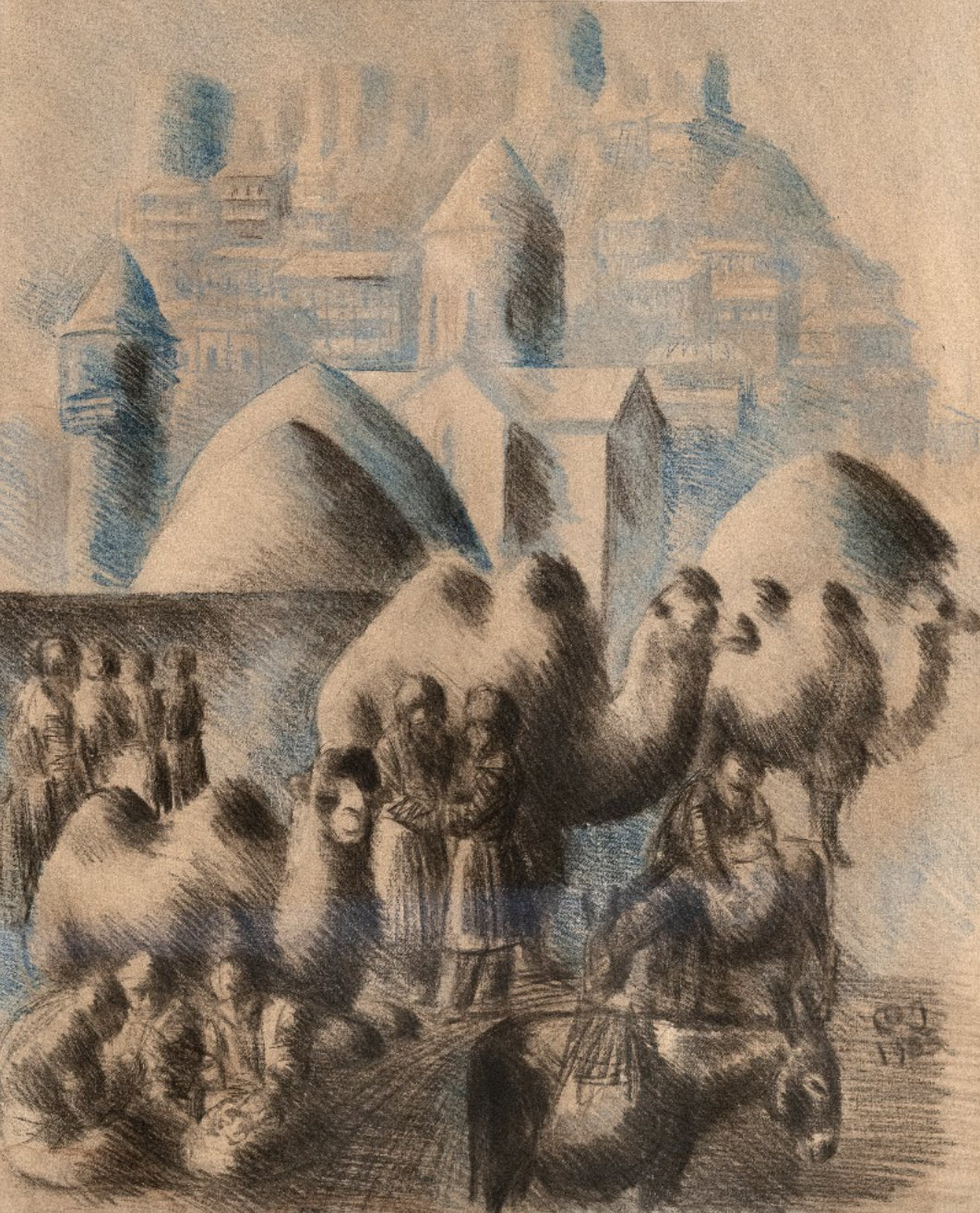
Dimitri Eristavi. Old Tbilisi. Pencil, paper. 44x37cm. 1985. ATINATI Private Collection.
Throughout his career, Dimitri Eristavi employed paper, pencil, Indian ink, and a pen as his artistic tools. Line was his primary form of expression; the whiteness of a sheet, its undefined character, served as his working arena. Eristavi's intimate easel compositions are infused with incredible human warmth and a clear passion for his native home.
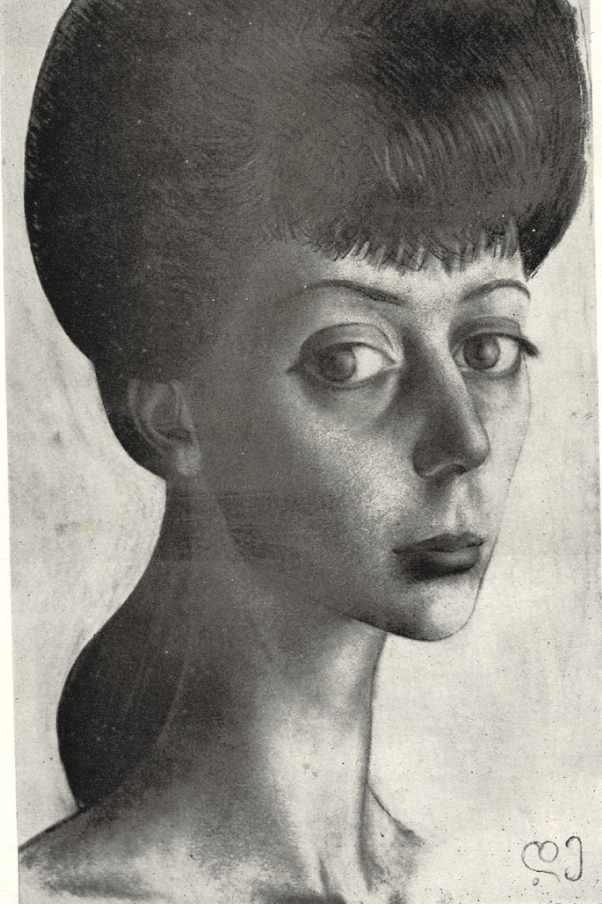
Dimitri Eristavi. Portrait of Manana Gedevanishvili. Paper, pencil. 63x41cm. 1961
In 1966, a group exhibition featuring three Georgian artists, including Eristavi, was held in Moscow at the editorial office of the magazine Yunost. The exhibition garnered significant attention, as it was viewed, within the controlled context of Soviet art, as a manifestation of the free thinking of youth, national identity, and a novel sense of modernity. What set the young Georgian artists apart? What caused them to challenge and potentially disrupt the stagnant, imperial mindset? Their work lacked any elements of rebellion or radicalism; each of them portrayed the Georgian world of the time with remarkable modesty and enormous affection. For them, it was the unpleasant, self-sufficient atmosphere of the coexistence of classic and modern, free of any party propaganda, that unexpectedly opposed official art.
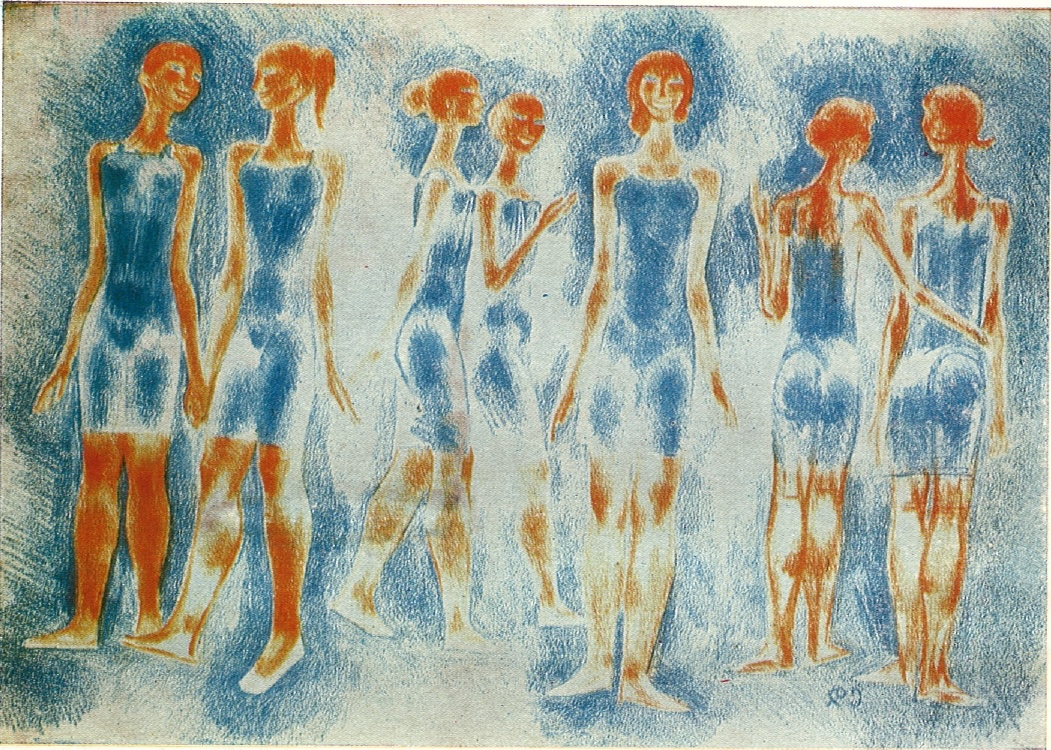
Dimitri Eristavi. Ballerines. Paper, crayons. 39x54cm. 1973
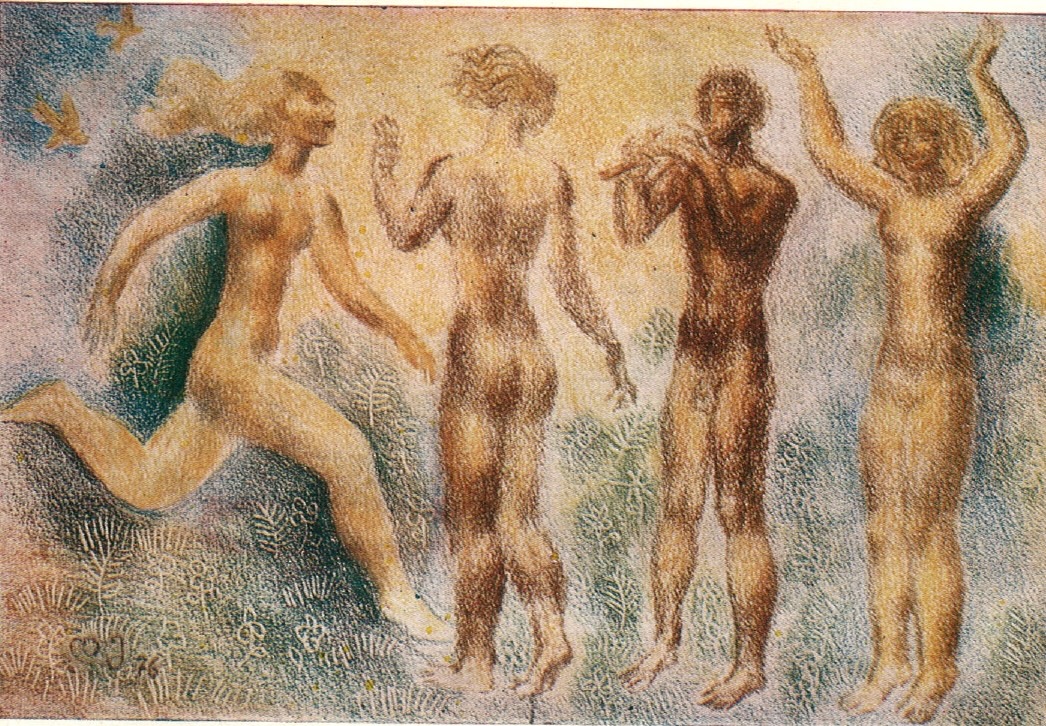
Dimitri Eristavi. Dance. Paper, crayons. 28x20cm. 1976
Through his art, Dimitri Eristavi consistently captured the essence of Tbilisi life, an everyday world that was intimately familiar to him. It was his touch that drew us into the everyday world of the younger generation—into Tbilisi’s streets, yards, and old neighborhoods. Their presence transforms everything, charging us with the boundless energy of optimism and taking us back to the romantic spirit of youth.
Eristavi’s works are rich with movement and life. The people of Tbilisi came alive through his brush—young girls, tall and slim, hurrying along with smiling faces and a cheerful rhythm; elderly people resting in a garden under a large umbrella; men lined up in front of a beer tent; or women whispering to each other from a balcony in an old Tbilisi yard. It is a never-ending journey for the observer, since each painting addresses the timeless concept of peaceful coexistence.
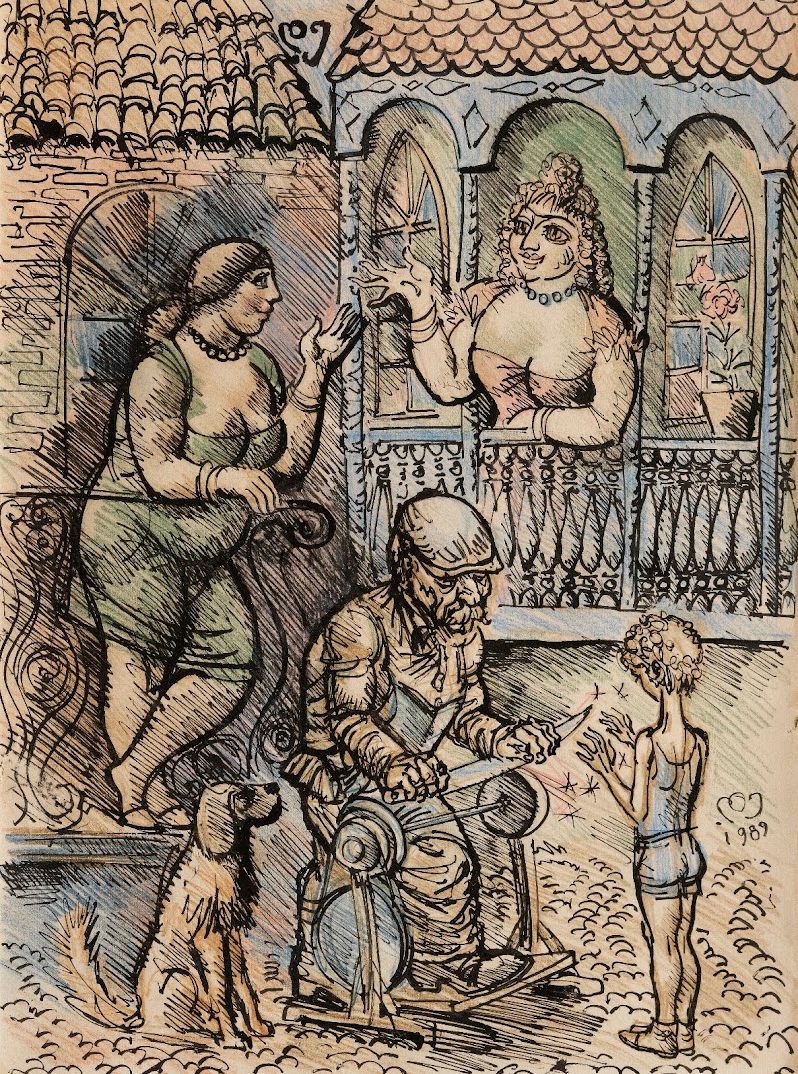
Dimitri Eristavi. Untitled. Mixed Media on paper. 35x49cm. 1989. ATINATI Private Collection
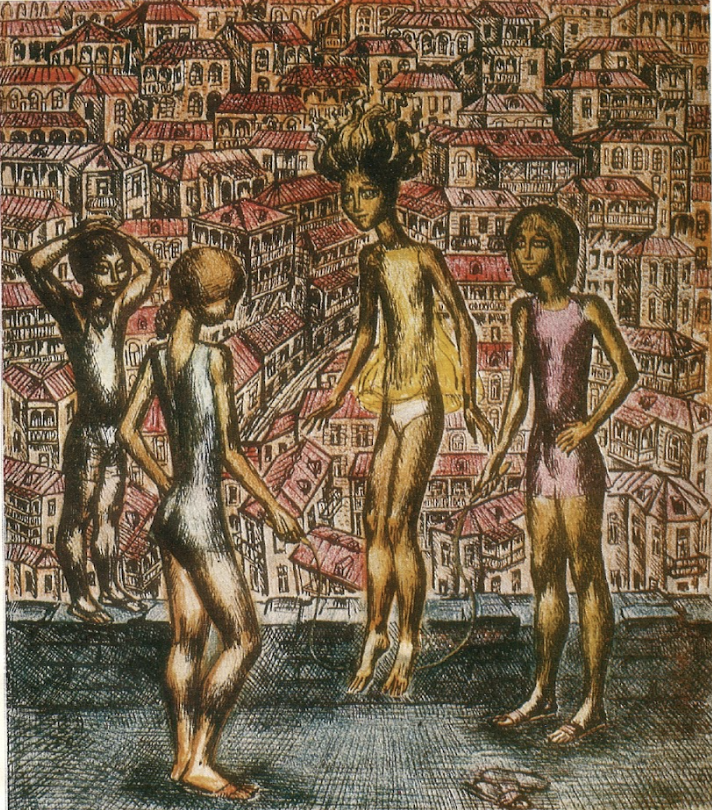
Dimitri Eristavi. Playing Skipping. Paper, crayons. 39x54cm. 1978
As previously stated, line was Dimitri Eristavi's primary form of expression. In some works, his lines are sharp and well-defined, outlining forms with precision. He then used local colors to fill in the planes that are framed by those lines, creating compositions that are both visually striking and rhythmically balanced through their interplay of color and shape.
In certain paintings, the strokes are placed softly on the surface of the sheet, highlighting the plastic appeal of the fleshy bodies of girls. When the strokes intersect, they convey the density and sculptural nature of the image.
Eristavi often incorporated bright, additional elements into his works. These touches enhance the visual experience without disrupting the graphic integrity of the composition. Color, whether coming in the form of colored pencils, pastels, watercolors, or gouache, was a tool of plastic enrichment that allowed the drawing to become even more expressive.
Dimitri Eristavi was a smart, occasionally sardonic narrator. He did not shy away from exaggerating form—emphasizing distortions in facial features or bodily proportions. Yet these components never slipped into caricature. Instead, they serve to deepen the viewer's connection to the subject, preserving a sense of human dignity and compassion.
Dimitri Eristavi offered not only paintings showing Tbilisi life, but also landscapes of Tbilisi's historic locales. These clearly demonstrated the artist's ability to capture not only the character of buildings, but also to generalize their look, distribute them decoratively and planarly throughout the surface of the canvas, and to imbue them with an epic character. For the artist, the city was the central concept that is mirrored in its inhabitants. Tbilisi’s glass-fronted houses—irregularly scattered along the mountain slopes, standing side by side—are infused with human warmth. These landscapes, together with genre painting, create unity within the picturesque world of Dimitri Eristavi.
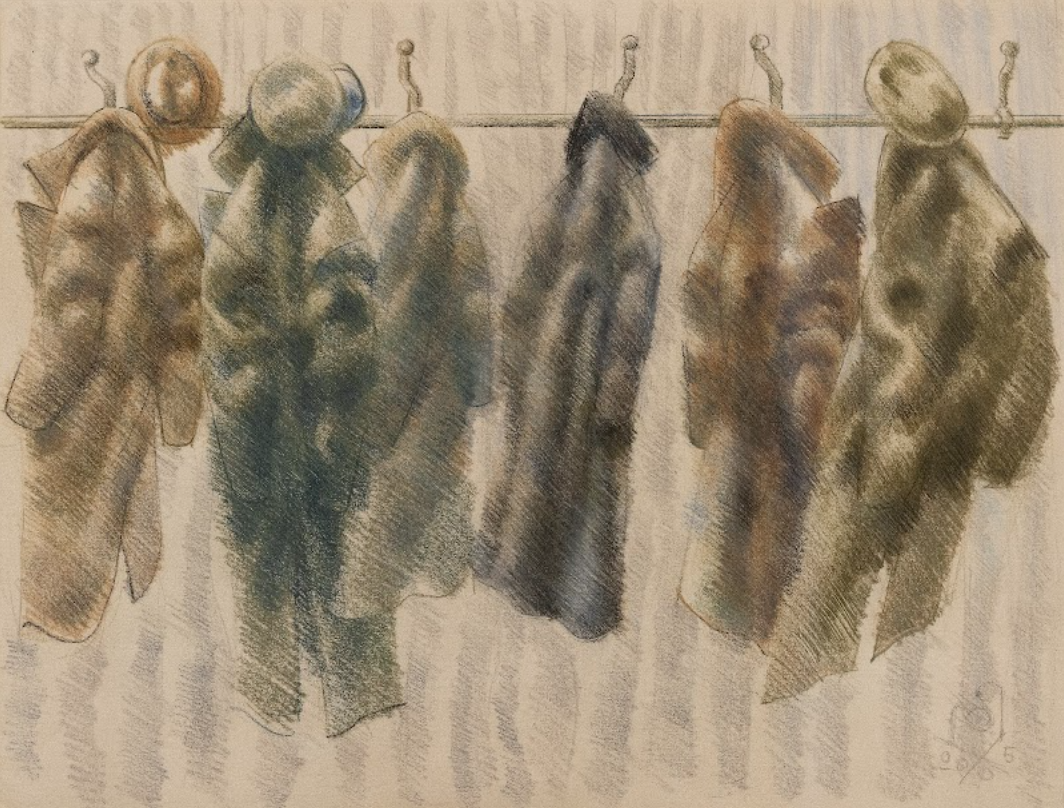
Dimitri Eristavi. Wardrobe. Pencil, paper. 36x48cm. 2005. ATINATI Private Collection
There is no everyday detail that the artist could not capture. Take, for example, the Wardrobe, where coats are hung, presumably in a theater. Each coat differs in shape, movement, and detail, much like their owners, providing insight into the characters of the people they belong to.
Dimitri Eristavi was an exceptional illustrator, having illustrated a wide range of books, from I. Chavchavadze to Shakespeare. In his pictures, his use of the language of exaggeration and grotesque can be seen again, serving to give his creations greater tension and drive. They are consistently passionate and expressive, drawing readers in with their abundance of details.
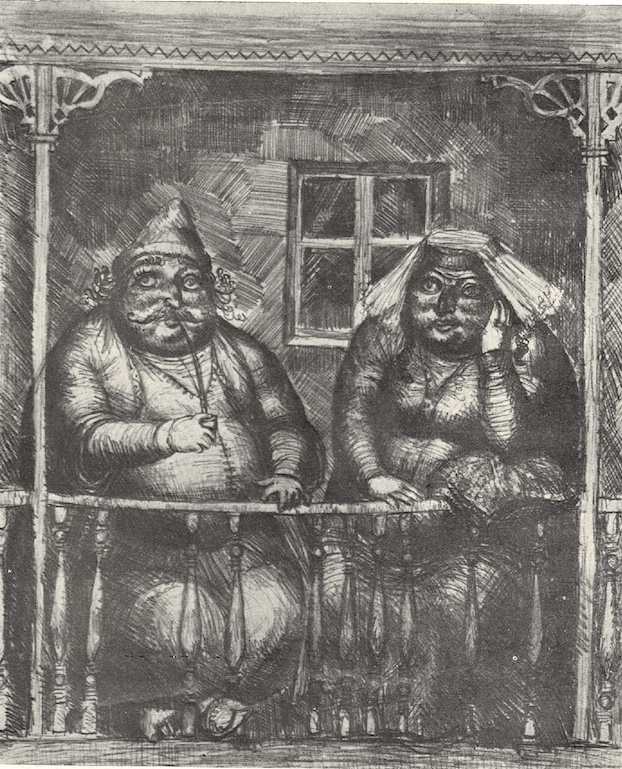
Dimitri Eristavi. Illustrations to I.Chavchavadze Story "Is He a Man". Paper, pencil. 48x36cm. 1978
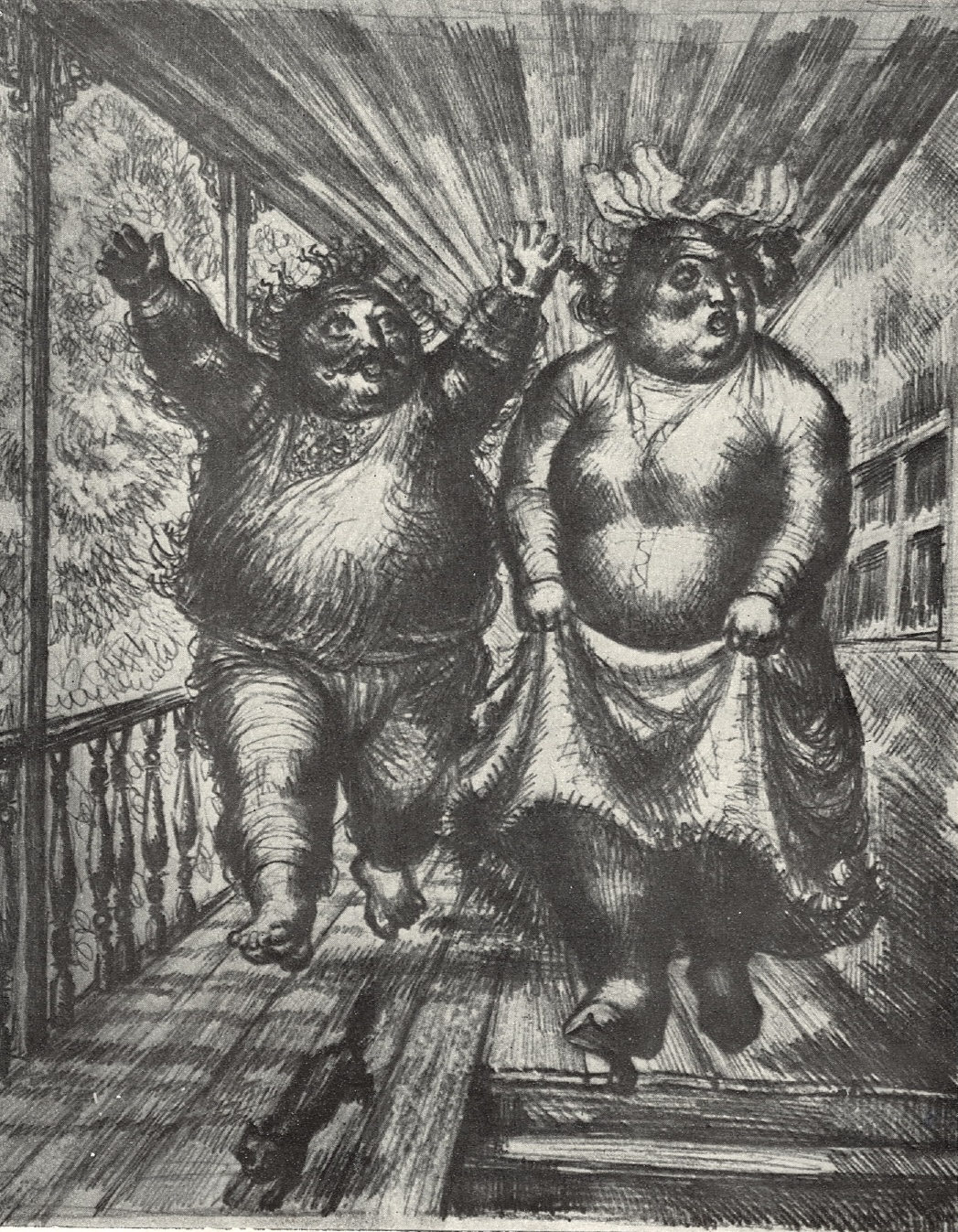
Dimitri Eristavi. Illustrations to I.Chavchavadze Story "Is He a Man". Paper, pencil. 48x36cm. 1978
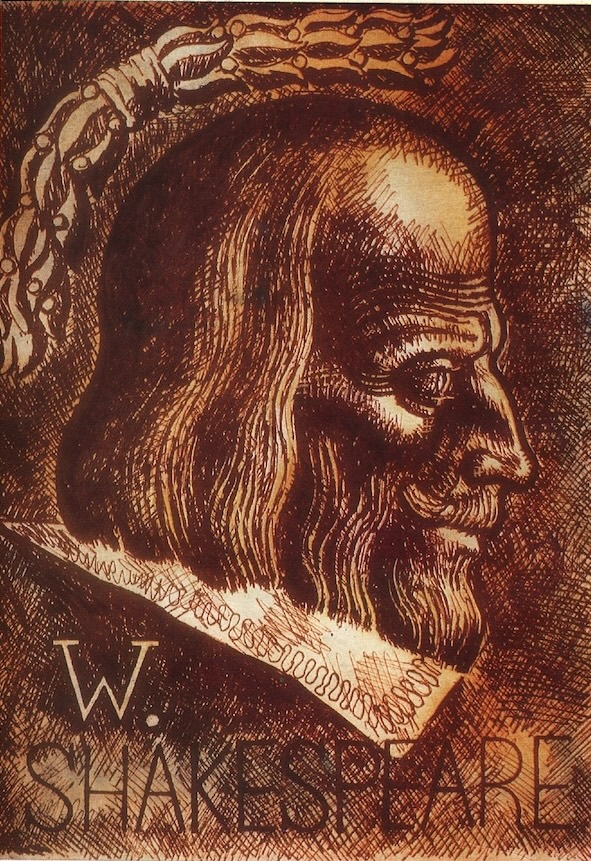
Dimitri Eristavi. Illustration to Shakespeare's Hamlet. Paper, water color, pencil. 30x37cm. 1976
Dimitri Eristavi's graphic work is also well renowned. His creations have a distinct aesthetic appeal that resonates even with casual viewers, and this is why he became an honored artist among Georgian society, rightly earning himself a plethora of official titles and prizes.